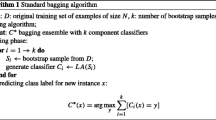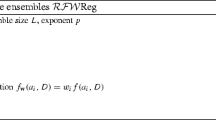Abstract:
Several ways of manipulating a training set have shown that weakened classifier combination can improve prediction accuracy. In the present paper, we focus on learning set sampling (Breiman’s Bagging) and random feature subset selections (Ho’s Random Subspaces). We present a combination scheme labelled ‘Bagfs’, in which new learning sets are generated on the basis of both bootstrap replicates and random subspaces. The performances of the three methods (Bagging, Random Subspaces and Bagfs) are compared to the standard Adaboost algorithm. All four methods are assessed by means of a decision-tree inducer (C4.5). In addition, we also study whether the number and the way in which they are created has a significant influence on the performance of their combination. To answer these two questions, we undertook the application of the McNemar test of significance and the Kappa degree-of-agreement. The results, obtained on 23 conventional databases, show that on average, Bagfs exhibits the best agreement between prediction and supervision.
Similar content being viewed by others
Author information
Authors and Affiliations
Additional information
Received: 17 November 2000, Received in revised form: 30 October 2001, Accepted: 13 December 2001
Rights and permissions
About this article
Cite this article
Latinne, P., Debeir, O. & Decaestecker, C. Combining Different Methods and Numbers of Weak Decision Trees. Pattern Anal Appl 5, 201–209 (2002). https://doi.org/10.1007/s100440200018
Issue Date:
DOI: https://doi.org/10.1007/s100440200018




